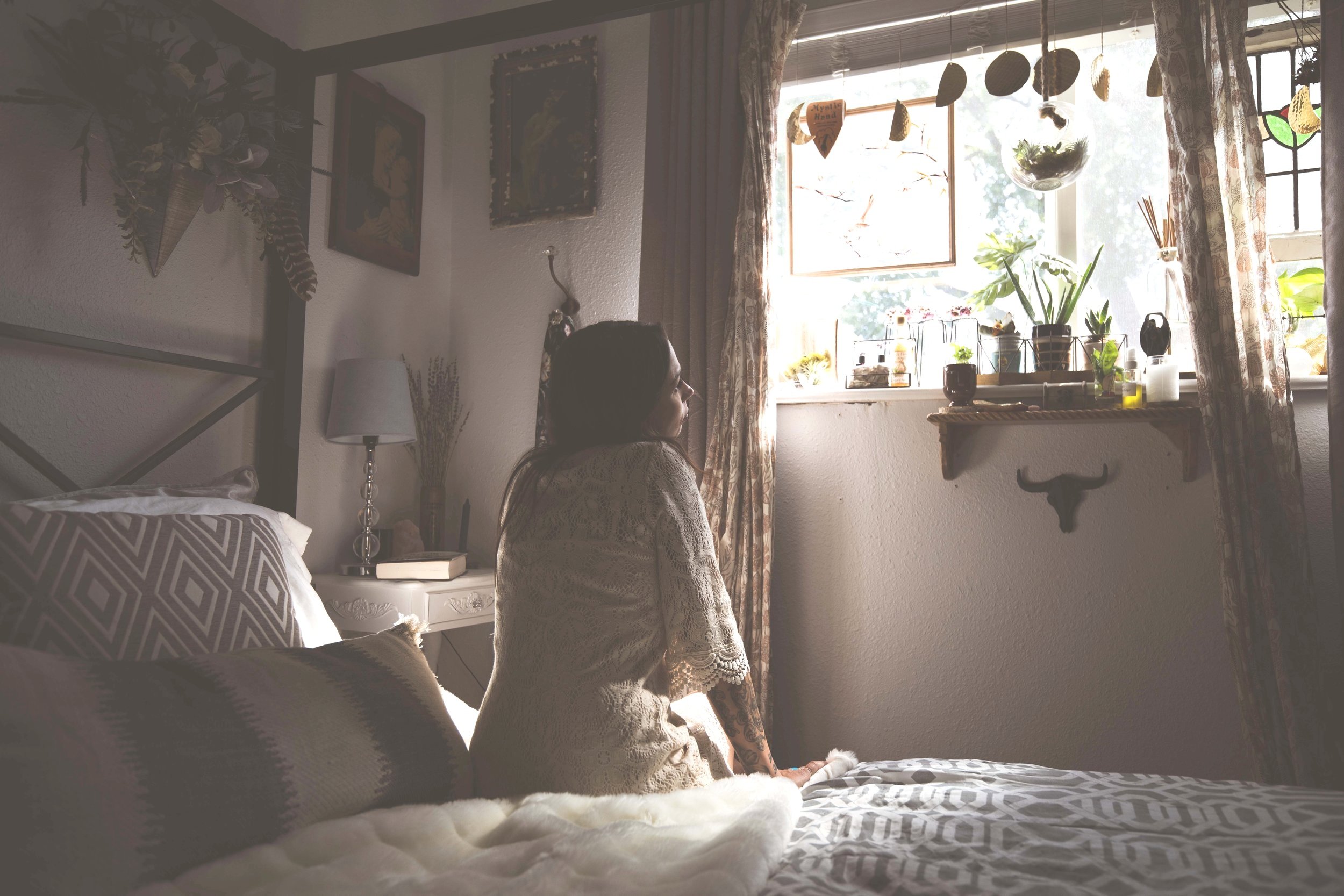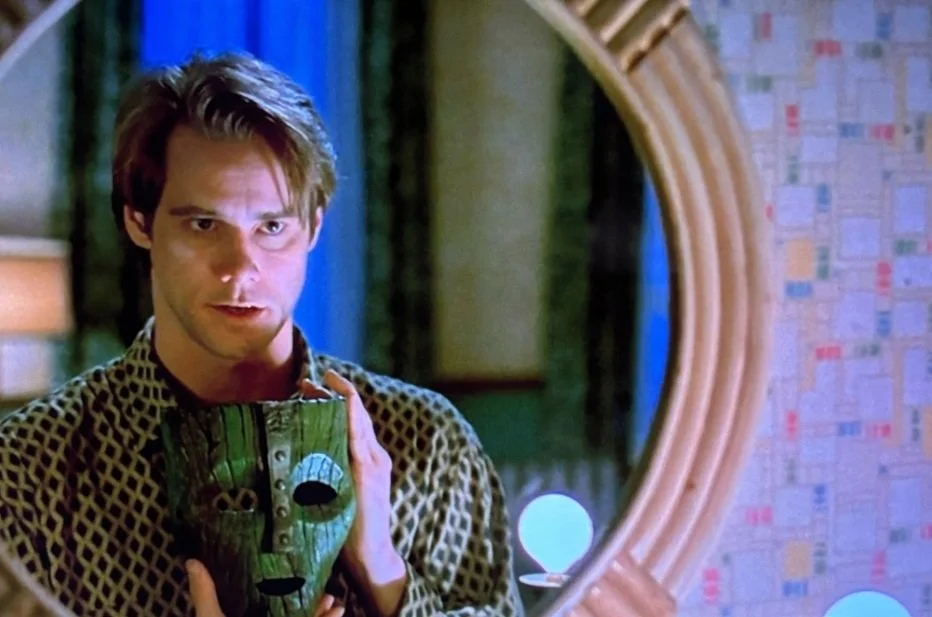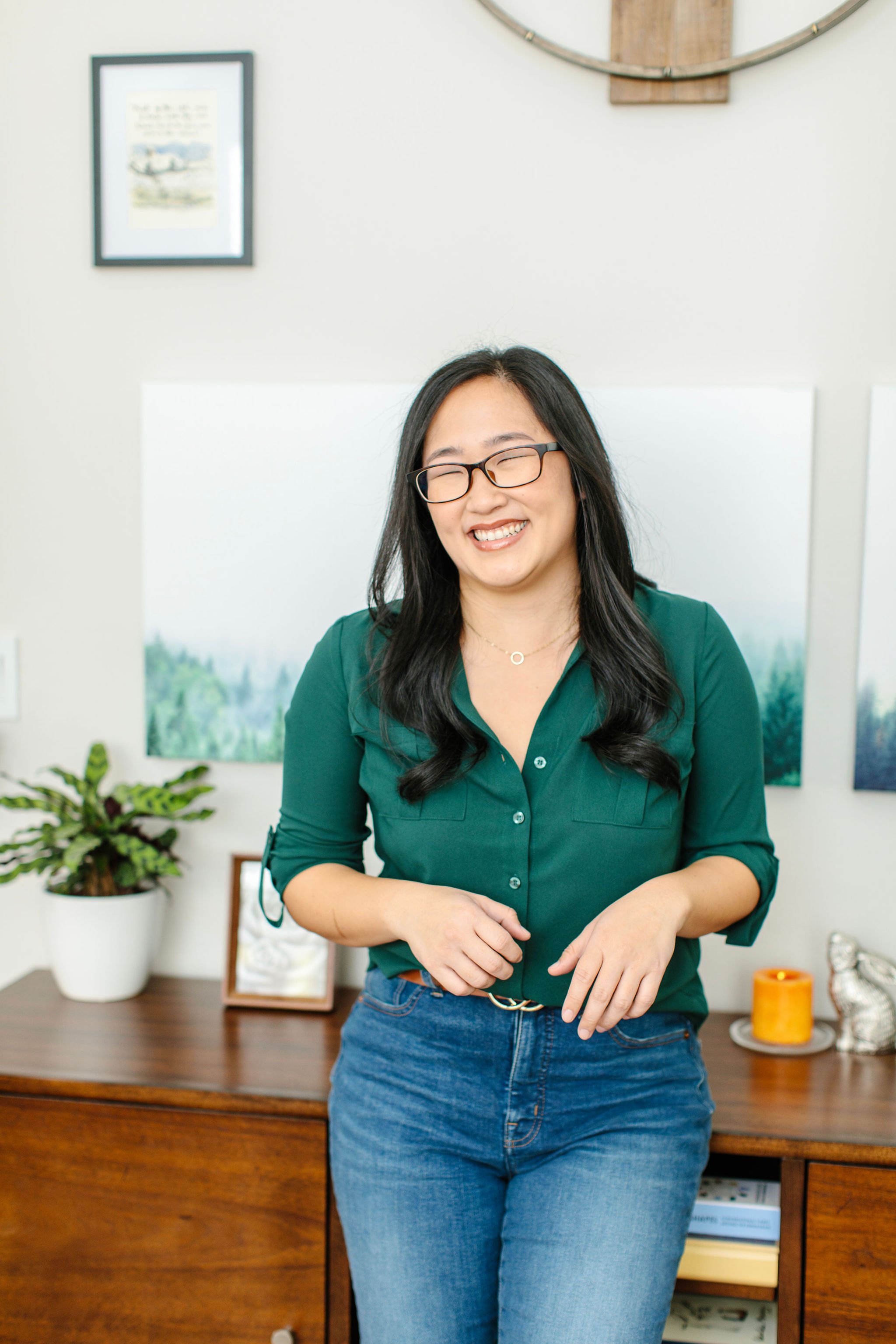DISCLAIMER: The Brainspotting approach mentioned here is meant to help your body decompress from stress accumulated from a busy day, NOT to help you process trauma. This post is NOT meant to be a replacement for therapy, just to help you wind down and rest more readily.
If you have trauma triggers or really intense emotional reactivity, find a therapist near you.
Your body knows how to heal itself
Brainspotting is a therapy modality that’s been gaining more attention in recent years because of how well it helps people process emotional reactivity, trauma, and dissociation.
As a derivative of EMDR (Eye Movement Desensitization and Reprocessing), Brainspotting also utilizes eye positions. David Grand, the founder of Brainspotting, says, “Where you look affects how you feel.”
Many of my therapy clients who’ve tried both EMDR and Brainspotting say that they prefer the latter, hands down, because of how intuitive it can be and how deeply yet quickly it helps people resolve their pain.
One of the best things about Brainspotting is that this is actually something our bodies intuitively know how to do. Staring off into space, eyes glazed over, is an example.
Gazespotting (one specific type of Brainspotting) is a useful tool to keep in your back pocket, especially if you’re a Highly Sensitive Person or if your life circumstances are super busy and/or chaotic that you often feel overwhelmed (parents of young kiddos, I see you!).
Gazespotting is much more helpful than Netflix binging or scrolling mindlessly on social media, since you don’t actually feel more rested after those things.
No fancy equipment necessary for Gazespotting - you just need 5-7 minutes (15 minutes, even better!).
You can do this anywhere and anytime you don’t have anything you need to focus on (i.e., don’t do this excessively at work or while driving - otherwise you might make mistakes or miss your exit!).
How to do DIY Brainspotting
Reminder, don’t try to do trauma processing by yourself. Brainspotting is like deep water diving - the further below the surface you go into your subconscious, the darker and more disorienting it gets. Divers have someone else sitting in the boat on the surface, ready to pull them out when it’s getting too risky or when it’s time. The Brainspotting therapist is that someone else.
Here are the steps for Gazespotting:
Recommended timing: Once around lunch time, once around dinner time, and once before going to bed (basically, when your body and mind needs a break from work/focus mode).
Set an alarm for 7 minutes, with a pleasant alarm tone.
Focus on a part of your body that feels the most GROUNDED, NEUTRAL, and CALM. Rate that feeling from 1-10 (10 - most relaxed).
Then, look around in your room (first from left to right at eye level, then up/down) and find a spot where you feel even MORE relaxed.
Zone out while staring at that spot until the timer goes off.
Just notice whatever comes up - none of this needs to make sense to your analytical brain.
When the timer goes off, close your eyes, scan your body, and stretch your body to reset and be fully present again.
Don’t do this for longer than 5 minutes at a time. Better to do it more frequently than longer durations.
If you’re still feeling checked out, drink some water. Notice the temperature of the water as it goes down.
BONUS: If you’re feeling super reactive and have a hard time calming, here’s a great video that my work wife Melinda Olsen made about Vergence, another type of Brainspotting you can do yourself!
Power of Permission
The main difference between Gazespotting and you accidentally zoning out is your INTENTION.
When you zone out reflexively, you might often judge yourself because society deems those who are inactive as being “lazy”, “sluggish”, “unproductive”, etc.
You might judge yourself, or others around you might judge. But when you give yourself PERMISSION to zone out, a huge internal switch happens.
When you zone out DESPITE your plans, you feel TRAPPED, HELPLESS, OUT OF CONTROL, and ASHAMED. This adds more strain to your nervous system, which makes you more reactive.
When you zone out because you WANT to, you experience the feelings of AGENCY and SELF-CONTROL. This helps the nervous system soothe.
Practice giving yourself PERMISSION to rest, zone out, do nothing. Then see what happens.
A loud inner critic…
When your inner critic/Manager part starts criticizing you for not getting work done:
Say thank you to that part for wanting to help you
Say that what it’s doing is not actually helping because it’s adding MORE stress that shuts you down further
Tell that part that what you’re needing right now is to turn your nervous system back on and that you need to turn off your brain for a while to do just that
Say that you’ll ask for your inner critic’s help again when it’s the right time. Now is not that time.
Reset the timer to 5 minutes.
Resume gazespotting.
A Rhythm of Relaxing
Gazespotting is something I’ve integrated into my normal daily routine during lunch breaks, when I come home from work (sitting in my car for an extra 5 min before going inside), or winding down at the end of the day in bed.
More frequent, shorter runs are better than having stress buildup on your nervous system. If you really don’t have chunks of time to do this, doing this for 1 minute every hour between meetings or activities would still do wonders for your mind, heart, and body.
Start incorporating this wherever you are, and see where this takes you. The key words are “INTENTION” and “PERMISSION.”
Do your BIG Feelings always TAKE OVER, ruining important moments or derailing your goals?
Grab this free guide that helps you handle feelings like a pro when they show up at the "wrong place" or "wrong time"!
© Copyright 2022 Joanne B. Kim. All rights reserved.
JOANNE B. KIM, LMFT
Joanne is a Licensed Marriage & Family Therapist and Certified Brainspotting Practitioner in San Jose, CA. She helps people EXHAUSTED by anxiety, shame, and an allergic reaction to anger create VIBRANT relationships where they matter, too.
Many of her clients are:
(1) the highly responsible, conscientious, and empathic types
(2) Enneagram Type Ones, Twos, Fours, or Nines
(3) Highly Sensitive Persons (HSPs)
The most common words spoken by those who’ve sat with Joanne:
“I thought it was just me. I’m NOT crazy!”
“I can finally figure out what to do with all these feelings!”







































In a conversation with Catherine Quiring of the Coming Home to Ourselves Substack, we explore the Enneagram through the lens of the show Ted Lasso, going into the importance of emotional intelligence, the role of instincts & subtypes in the Enneagram, and how these concepts can help individuals navigate their personal growth and relationships.